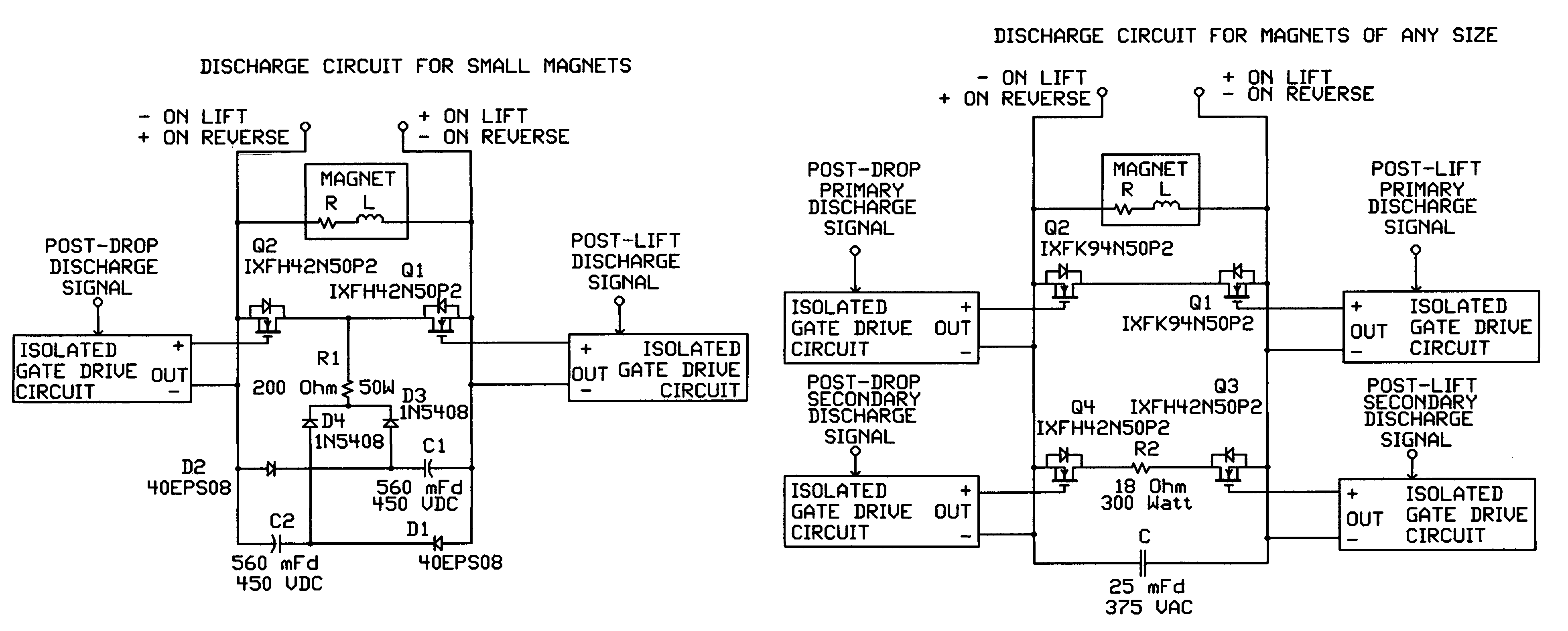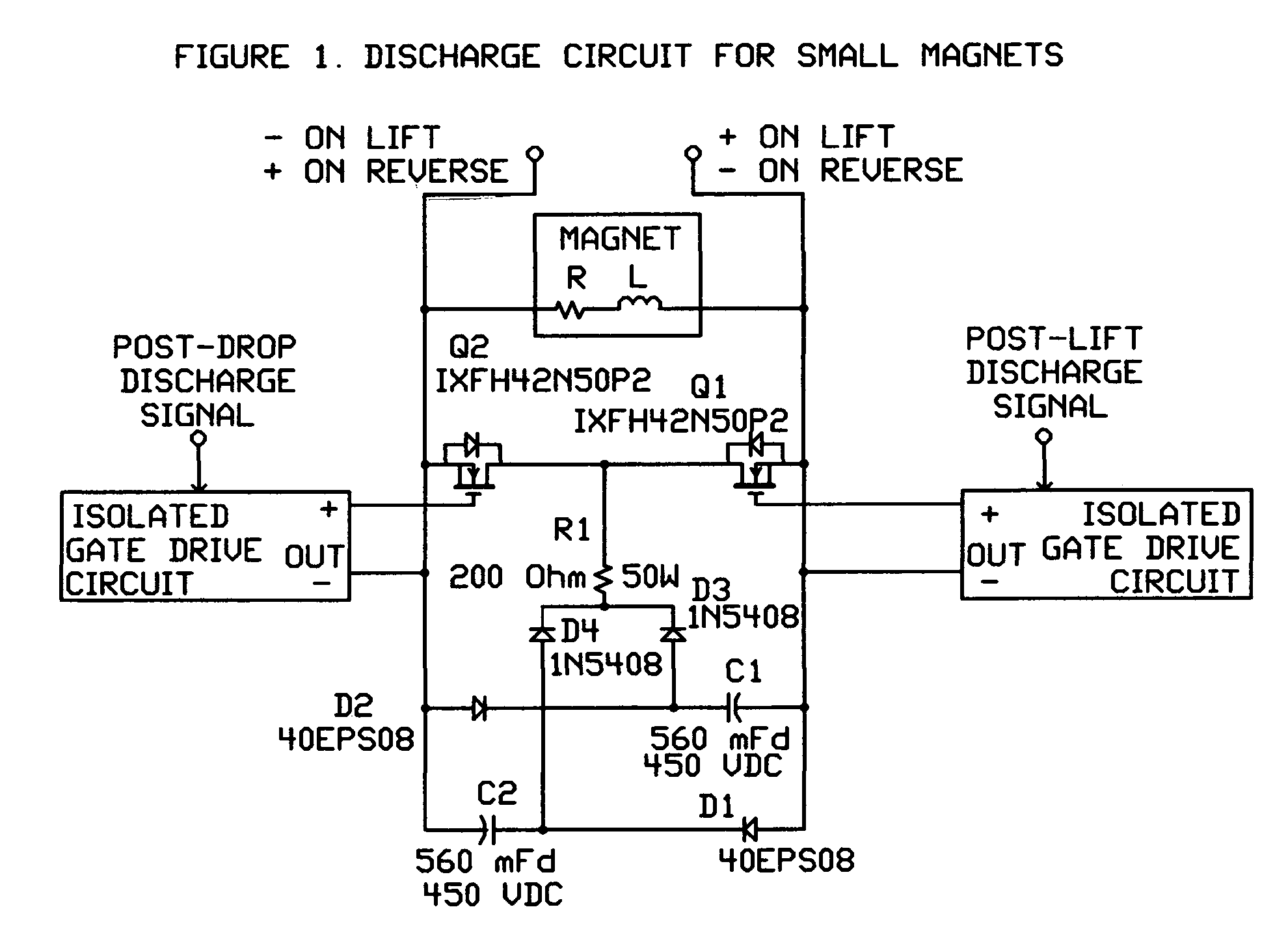Method and apparatus for discharging a lifting magnet
a technology of lifting magnets and ac capacitors, which is applied in the direction of magnetic bodies, load-engaging elements, electromagnetic relay details, etc., can solve the problems of prohibitively high price, bulky, and high cost of ac capacitors of more than a few tens of microfarads with a sufficient voltage rating, so as to reduce current, prevent damage to semiconductor switching elements, and high voltage
- Summary
- Abstract
- Description
- Claims
- Application Information
AI Technical Summary
Benefits of technology
Problems solved by technology
Method used
Image
Examples
Embodiment Construction
[0025]It is to be understood that the present disclosure is an exemplification of the principles of the invention and does not limit the invention to the illustrated embodiments.
[0026]No voltage is applied to the magnet in the initial state, the magnet is fully discharged, and the switches controlling the flyback diodes are off. In the discharge circuit of FIG. 1 the capacitors C1 and C2 are fully discharged. In the discharge circuit of FIG. 2 the capacitor C3 is fully discharged and the second set of switches shown as Q3 and Q4 are off. The switches are FETs in the preferred embodiment, as shown in the drawings. The operator signals the controller for a “lift” by, for example, pressing a pushbutton. The control circuit responds by applying voltage to the magnet in the “lift” direction. Ideally, the switch controlling the “lift” flyback diode is turned on at this time. This switch is shown as Q1 in the drawings, and the flyback diode for “lift” is the body diode of Q2. The power sou...
PUM
 Login to View More
Login to View More Abstract
Description
Claims
Application Information
 Login to View More
Login to View More - R&D
- Intellectual Property
- Life Sciences
- Materials
- Tech Scout
- Unparalleled Data Quality
- Higher Quality Content
- 60% Fewer Hallucinations
Browse by: Latest US Patents, China's latest patents, Technical Efficacy Thesaurus, Application Domain, Technology Topic, Popular Technical Reports.
© 2025 PatSnap. All rights reserved.Legal|Privacy policy|Modern Slavery Act Transparency Statement|Sitemap|About US| Contact US: help@patsnap.com



